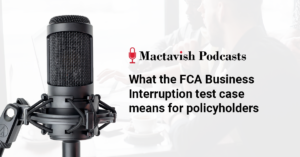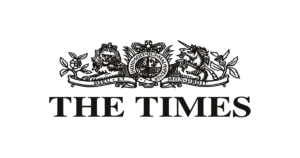
Few industries could claim to have suffered more at the hands of the hard insurance market than the food and beverage industry. Over the past two years, businesses have been particularly affected by insurers adopting a harsher attitude to property risk, resulting in reduced capacity, higher premiums, and stricter policy terms. There are a number of factors behind this trend.
2017 was a watershed year for food and beverage industry insurance pricing – not helped by the $136bn of insured losses caused by natural and man-made disasters.[1] The use of composite panelling in manufacturing and processing plants, and the fire safety of plants in general, came under intense scrutiny following a series of fires around the world, including those at two Australian abattoirs in 2017-18, and, in the UK last year, at both a major food retailer’s warehouse and a gin distillery – to name but a few examples. More recently, the industry’s woes were compounded by the unprecedented devastation of the 2019-20 Australian bushfire season, and the withdrawal of MS Amlin, the pre-eminent insurer of food and beverage risk, from the UK property market.
Insurance buyers in the food and beverage industry faced a difficult enough task navigating these challenges under prevailing conditions. However, the Covid-19 pandemic has utterly transformed the insurance landscape, making this task immeasurably more complex and extending these issues to all insurance lines. Insurers’ losses, estimated by Lloyd’s at more than $200bn globally, have placed greater emphasis on underwriting profitability, leading to more premium hikes and coverage erosion.[2] Procuring sufficient coverage is an increasingly expensive and difficult endeavour, whilst businesses face greater risk exposure resulting from supply chain disruption, employee and customer welfare concerns, and operational changes during a period of unprecedented economic and social turmoil.
Supply Chain
Food and beverage supply chains have become increasingly complex structures, with businesses of all sizes acting as crucial cogs in a machine that operates on a global scale. Any small disruption can have wider ramifications for all involved parties. The pandemic has revealed the fragilities underlying many supply chains, and has exposed their weaknesses when withstanding major shocks to the system.
Logistics is a primary concern and, whilst global stocks remains plentiful, many businesses are finding it increasingly difficult to shift produce from A to B in a timely manner. This situation might deteriorate further if countries enact widescale trade and travel restrictions to protect internal supplies, creating a knock-on effect across national borders given the interconnected nature of various national economies and trading blocs. Retailers were particularly troubled following the surge in panic buying during the initial stages of the pandemic. This was problematic for those businesses, such as major supermarket chains, that employed a ‘just in time’ supply strategy, in which minimal reserve stock is retained in order to reduce storage expenses. It has been argued that this strategy was not designed to cope with the sudden spike in demand that was brought on by the pandemic.
Where supply has been disrupted, some affected businesses might elect to use alternative suppliers. However, such a move is likely to raise concerns over food fraud: a pertinent issue for an industry that has been scarred by the horsemeat scandal of 2013 and is experiencing an increasing number of product recall incidents. Indeed, one study highlights manufacturers’ concerns: 32% could not guarantee that the ingredients they used were not fraudulent, in part due to the complexity of their supply chains.[3] Meanwhile, reducing exposure to a product recall incident is becoming more costly, with premiums increasing by up to 10% on the average placement.[4] The study also reveals that 44% of manufacturers procured increased liability insurance to meet retailers’ contractual demands following concerns about these ingredients’ origins. The pandemic’s intensification of hardening market conditions will make it more difficult to comply with insurance requirements, potentially leaving businesses unable to win contracts in the future.
In some cases, the primary issue is not logistical but rather a collapse in demand. The widespread closure of the restaurant and hospitality sector has not only impacted their revenue but also that of their wholesale suppliers. These wholesalers, some of whom supply restaurants in many countries – again illustrating the complexity of the industry’s supply chains – have struggled to shift surplus stock. This in turn leads to decreased wholesale demand for produce, meaning that some producers’ revenues have suffered as a result. Some of these businesses are involved in legal appeals against insurers following a blanket rejection of Business Interruption claims as a result of the pandemic. Regardless of the outcome of these cases, we expect that (and are already seeing) insurers will seek to remove any uncertainty by inserting broad Covid-19 exclusions at upcoming renewals.
Supply chain issues do not solely pertain to produce. Many producers rely on seasonal workers from abroad to meet the demands of the harvest. Whilst the UK government has recently removed self-isolation requirements for these workers, producers still face difficulties in sourcing sufficient numbers. These problems will not cease to exist come the end of the pandemic. Brexit negotiations continue in the midst of this disruption, and the transition period will end on 31st December 2020, after which date the free movement of people and ‘frictionless’ flow of goods may come to an end. The potential outcome of the trade deal remains unclear, and businesses will need to reconsider their insurance requirements in the face of potential worker shortages and export issues.
Employee/customer welfare
Many firms in the food and beverage industry continued to operate as essential businesses during the lockdown, whilst others will begin to resume normal operations from 4th July 2020. In all cases, health and safety requirements have dominated concerns as businesses continue to perform the fine balancing act of provisioning for the health of employees and customers, as well as that of their bottom line.
Various practices have been implemented in different arenas, from processing plants to retail stores, including social distancing measures, the installation of protective screens, and the acquisition of PPE for employees and customers alike. Adherence to these measures will be crucial for the foreseeable future, as localised outbreaks of Covid-19 occur more frequently; in the past few weeks, food production sites in Germany, the UK and the US been identified as sources of outbreaks, leading to hundreds of workers needing to self-isolate. Businesses will need to demonstrate that appropriate measures are in place to prevent the spread of Covid-19 at their premises. If, as has been discussed, it transpires that food processing facilities provide a particularly hospitable environment for the virus, much more widespread changes can be expected. In addition, executives can potentially be held liable if contingency planning is alleged to have been inadequate, or if managers are accused of poor decision making. This includes actions being raised either by shareholders for poor financial performance during the pandemic, or even for example by employees who have contracted Covid-19 at work or are suffering as a result of poor crisis management. Claims may also arise from discrimination allegations, if, for example, employees believe that the business has devoted more attention to risk management for different types of worker. It is for these reasons that sourcing sufficient Directors & Officers Liability coverage, and considering Employment Practices Liability cover, can be crucial.
The combination of a difficult to manage working environment with a heavy dependence on new sources of temporary labour may present a real long-term challenge that would have a significant impact on insurance costs.
Policyholders will face numerous challenges in attempting to transfer these risks. The D&O market began to deteriorate severely in 2019 and has witnessed ongoing capacity contraction even before the advent of the pandemic. The consumer staples sector saw a year-on-year premium change of 123% in Q4 2019, and we expect this figure to continue to rise.[5] This isn’t simply a question of cost, with recent renewals also witnessing severe restrictions in coverage. The impact of Covid-19 could also see the, currently more benign, public and employer’s liability markets become much more problematic.
Operational changes
Most businesses will have changed their operations to some degree over the past few months, which in turn has fundamentally altered risk profiles and insurance requirements.
Some producers and delivery services have experienced a surge in demand as consumer habits shift away from the dine-in experience to home preparation and takeaway meals. Businesses that have benefitted from an uptick in sales might find that their current Business Interruption limits are too low in respect of their increased revenue. Moreover, increased sales can lead to greater exposure in the event of product contamination, which current Product Recall limits might fail to reflect. Likewise, businesses contending with surplus stock might need to revise their Property Damage or Stock limits.
Companies that conduct more business online will face increased cyber and crime risk exposures, and could also suffer from broad brush Covid-19 exclusions and insurers demanding higher risk retention in the form of higher deductibles on both lines.
In any case, significant operational changes in response to Covid-19 can place businesses in breach of their existing policy terms, potentially leaving them unable to access crucial cover in the event of a major claim. This is a fatal prospect for many businesses in this severe economic downturn.
What can be done?
Businesses have changed their risk management processes to navigate these challenges. Continuity plans are being revised, new businesses that have been incorporated into supply chains are being audited, and management teams are considering the welfare provisions in place for employees and customers, whilst ensuring that sound reasoning lies behind each decision made at the corporate level. All of this, alongside all other operational changes, should be disclosed to your insurer as a matter of course. Crucially, well-run food and beverage companies need to convey this careful management to insurers in a clear and compelling manner.
During these tumultuous times it is easy to overlook some of the finer details in your insurance programs. Failure to do so might pose existential challenges for your business. Considering the scale and the immediacy of these challenges, an expert, targeted response is required.
The Mactavish Health Check helps you understand these intricacies of your risk transfer programme, and provides bespoke, actionable guidance on what you can do to protect your business throughout the pandemic and beyond. We advise on your notification requirements, compliance with your risk management obligations, and whether you are eligible to make an insurance claim. Looking forward, we also provide guidance on your disclosure material to help you differentiate your risk and present it as a more attractive proposition for insurers. Our expert team helps you take control of your risk transfer programme and drive efficiencies and savings in the market. You can find our more about how we’re supporting companies in the food and beverage sector here.
If you would like to discuss any of the themes or challenges we discuss in this update please contact us here, we’d be delighted to help.
Liam Donnelly, Analyst
[1] https://www.swissre.com/media/news-releases/2017/nr20171220_sigma_estimates.html#:~:text=Global%20insured%20losses%20from%20disaster,third%20highest%20on%20sigma%20records.
[2] https://www.telegraph.co.uk/business/2020/05/14/lloyds-predicts-pandemic-will-inflict-record-203bn-losses-insurers/
[3] https://www.locktoninternational.com/gb/articles/food-thought-manufacturers-rising-liability-bill
[4] https://www.willistowerswatson.com/en-GB/Insights/2020/06/insurance-market-update-for-the-food-and-drink-sector
[5] https://www.marsh.com/uk/insights/research/retail-food-manufacturing-covid-19-client-webcast.html











